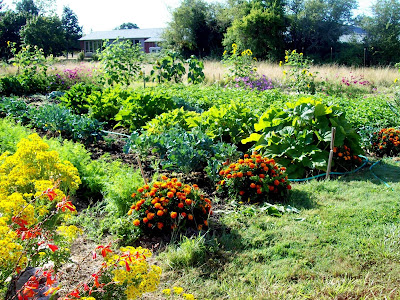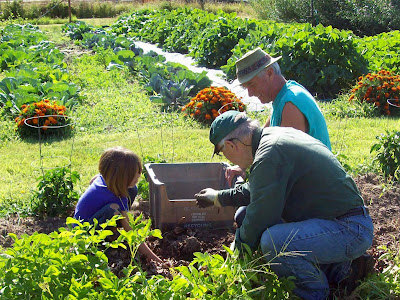Hello dear friends, We're already preparing for the 2020 season (we'll
start our first seeds in just six weeks) but
this post looks back at some of the highlights from 2019, one of our
best seasons ever! This post also offers thanks to all our supporters,
near and far. We couldn't do it without you!
We are truly grateful.
Well, the numbers are in! The Sharing Gardens have surpassed all previous records for harvesting this year with a total of 8,006 pounds!
Here are the highlights of our donations to charities:
South Benton Food Pantry: 1,513 pounds
Local Aid Food Pantry: 1,311 pounds
Other Misc. charitable donations: 575 pounds
Sub-total: 3,399 pounds
Shared amongst participants:
Sharegiver's (volunteers) weekly distribution of the harvest (and one family facing a cancer crisis who we donated a CSA membership to): 1,447 pounds
Food Preservation (canning/dehydration) and winter storage (potatoes, squash etc) - also shared amongst participants and will continue to be donated to the SB Food Pantry through the winter: 1,078 pounds
Sub-total: 2,525
Memberships:
Three CSA memberships (Community Supported Agriculture - LINK): 1,075 pounds
Equivalent of four CSA memberships offered to a class on healthy living for 12 weeks: 1,007 pounds
Sub-total: 2,082
Sharing Gardens 2019 Harvest Total: 8,006 pounds!
Previous
years' harvests averaged closer to 6,000 pounds. The increase this year
comes largely from the fact that our orchards and vineyards are
beginning to really bear fruit (approx. 521 pounds). We also grew lots of
potatoes (681 pounds) and winter squash (676 pounds). We've also
continued to expand our vegetable garden spaces for growing annual
vegetables, and in planting succession crops, so fertile ground is not
left empty after crops are harvested early in the season.
In addition to the food we grew ourselves, each week we received all the surplus produce from the Corvallis Farmer's Market that was picked up by Jim Templeton from the Monroe Gleaner's. We sorted it and redistributed it back through the Gleaners and through Local Aid which amounted to over 800 pounds total - thus keeping this valuable food from going to waste.
We have so much to be grateful for.
Cash donations from individuals:
Other donations:
Foundation grants:
The Sharing Gardens is a non-profit and tax-exempt
organization. We exist entirely
through grants, our CSA program and donations from people like you. If you have found benefit from our site, our project or just want to support the work we do, please consider making a donation through PayPal. (Click
button below.)
We are truly grateful.
 |
| Chris and Jim harvesting potatoes with little Jace's help. Potato harvest 2019: 676 pounds; our best yet! |
Here are the highlights of our donations to charities:
South Benton Food Pantry: 1,513 pounds
Local Aid Food Pantry: 1,311 pounds
Other Misc. charitable donations: 575 pounds
Sub-total: 3,399 pounds
Shared amongst participants:
Sharegiver's (volunteers) weekly distribution of the harvest (and one family facing a cancer crisis who we donated a CSA membership to): 1,447 pounds
Food Preservation (canning/dehydration) and winter storage (potatoes, squash etc) - also shared amongst participants and will continue to be donated to the SB Food Pantry through the winter: 1,078 pounds
Sub-total: 2,525
Memberships:
Three CSA memberships (Community Supported Agriculture - LINK): 1,075 pounds
Equivalent of four CSA memberships offered to a class on healthy living for 12 weeks: 1,007 pounds
Sub-total: 2,082
Sharing Gardens 2019 Harvest Total: 8,006 pounds!
 |
| OSU student-volunteers with sweet-meat squash harvest. |
In addition to the food we grew ourselves, each week we received all the surplus produce from the Corvallis Farmer's Market that was picked up by Jim Templeton from the Monroe Gleaner's. We sorted it and redistributed it back through the Gleaners and through Local Aid which amounted to over 800 pounds total - thus keeping this valuable food from going to waste.
We have so much to be grateful for.
Cash donations from individuals:
- Peter Stoel, Karen Josephson - $2,100 (from an I.R.A required distribution).
- Judy Peabody - $500
- Karen Salot: $100
- Lee Cornforth: $100
- Jim and Cindy Kitchen: $50
 |
| Jim and Cindy Kitchen (with Chris in the middle) - enjoying watermelon. |
- Victor Stone - honey (when a huge maple tree split open in a storm this winter, it revealed a hive of wild bees who then abandoned their hive leaving us with two gallons of wild-honey). Four cords of maple-firewood (a $1,000+ value): Victor already had enough firewood stored up for his needs so he helped us chop up that maple tree (and two others that also came down in the storm) and load the "rounds" into our truck. He got the debris from the storm cleaned up and we got several winters' worth of firewood. Now that's mutual-generosity! Victor has many maple trees on his land and this year, once again, he's blown the leaves into huge piles and then loaded them into our trailer for garden-use. Nineteen trailer loads so far! - Enough to cover the entire garden. Much thanks.
- David Crosby - loaned us his log-splitter to split Victor's wood-donation. Who needs a gym-membership when you have to split and stack all the wood you'll need to heat your house for the winter? David is also a local with lots of big trees on his land. We received five trailer-loads this year that he and his helper collected and delivered! Wow!
- Neighborhood leaf donations: Our leaf drive has continued to be a big success. We estimate that we've had approximately 150 bags of leaves donated this season.

Llyn spreading donated leaves. Donations have been enough this year already to cover all outdoor garden-beds, our greenhouse paths and still have a surplus for next summer's growing season. - S.A.G.E. Garden: S.A.G.E. Garden is a non-profit project run through the Corvallis Environmental Center. Like us, they grow a huge garden of organic vegetables to be donated to soup kitchens and food pantries. We donated over 100 cabbage and broccoli "starts" to them and they let us fill up a few dozen buckets of their surplus compost. Again, "mutual generosity"! LINK
- John and Donna Dillard - donated a chest freezer that was no-longer needed. The Dillards also donated a couple of trees-worth of firewood from trees taken down to make room for their new house. Also, cinder-blocks, large plastic and terra cotta planters, and salvaged lumber. Best neighbors ever!
- Larry M. - Fixed mower belt. Our trusty ride-on mower finally wore out the belt that drives the mower blade. Larry saved us the money it would have cost to have it repaired at the dealer, plus the hassle of transporting the mower.
- Craig Erken: Llyn's uncle Craig donated a Mother Earth
News-subscription - the
classic guide to homesteading. Also, after her help in cleaning out his
garage, Craig donated a dutch-oven we are using to cook with on our
wood-stove, a mini-shop-vac, a Champion juicer and a bunch of other
useful miscellany.

OSU Service-Learning students with kale-bouquets. Nov. 2019 - Peter Alford - driving our donations to Local Aid.
- Wanda Foster: a grocery bag full of fresh-picked Chanterelle mushrooms (it's been a great year for them but we've only managed to go out picking a handful of times ourselves).
- Cheryl Anson: wheelbarrow, salvaged redwood decking. Cheryl is the warehouse manager at Local Aid - one of the main recipients of our produce donations.
- Jim and Cindy Kitchen: gloves and pruners. The Kitchens also transported two of our CSA member's boxes each week on their way home from volunteering in the gardens.
- Catherine Henry: three and a half pounds of seed garlic (six varieties) which we've planted in our greenhouse.
- Mara Friddle - USDA/NRCS Plant Materials Center: Forty wire tomato cages made from fencing material.
- Our wonderful Share-givers: We couldn't do this without our core group of six wonderful volunteers. They came almost every week during the growing season for three hours, doing whatever needed to be done.
- Oregon State University "Service Learning" students: The SG has hosted six groups of 4-6 students-each to volunteer with us in 2019. The students receive hands-on experience in some of the many tasks needed to grow food for the community, an extensive Q&A session where we delve into their curiosity in living a more generous and sustainable lifestyle, and we receive an incredible boost of high-energy labor! A real Win-Win!
 |
| Llyn, with some of summer bounty donated to the SB Food Pantry. |
- Benton Community Foundation - $2,400: This grant funded the Sharing Gardens to provide vegetables to the Total Health Improvement Program (THIP), a twelve-week free class designed to help participants address, prevent and heal from chronic health issues through adopting a whole foods, plant-based diet, and stress-reducing behaviors such as meditation and exercise. The class is a partnership between our local, Monroe Health Clinic, it's vegan doctor - Dr. Kyle Homertgen, the South Benton Food Pantry and the Sharing Gardens.
- South Benton Food Pantry: $1,800 - for general operating expenses. This is the second year in a row that SBFP (a main recipient of Sharing Garden's produce) has made this generous donation.
- OSU Folk Club Thrift Store granted us $772 for general garden expenses: tools, hoses, gloves and potting soil to fill up our raised beds.
 |
| Thank you "berry" much! Bella, Adri and Jasmyn enjoy summer's blackberry abundance. |















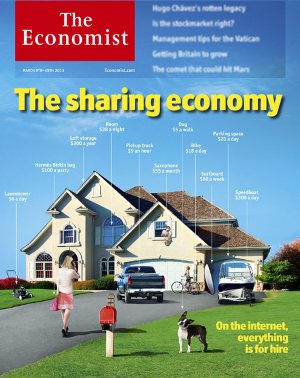 In
theory, our society is supposed to balance all these biases. We have
three big sectors. The private sector is rooted in extrinsic motivations
like money, power, fame. On the other end, we have the voluntary sector
that is rooted in very intrinsic sort of motivations. Compassion,
knowledge, purpose. And then there's the public sector that is supposed
to regulate between the two and work on both sides of the aisle.
In
theory, our society is supposed to balance all these biases. We have
three big sectors. The private sector is rooted in extrinsic motivations
like money, power, fame. On the other end, we have the voluntary sector
that is rooted in very intrinsic sort of motivations. Compassion,
knowledge, purpose. And then there's the public sector that is supposed
to regulate between the two and work on both sides of the aisle.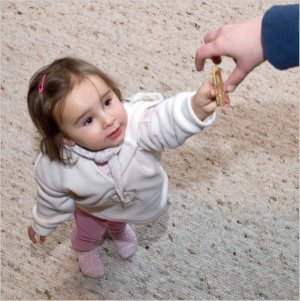 At the Max Planck Institute, researchers have been
At the Max Planck Institute, researchers have been 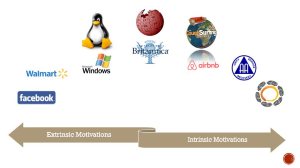 As we look closely, we see an entire spectrum of motivations. It
starts with extrinsic motivations on one side and goes all the way to
intrinsic motivations. On the extrinsic side, there's money, power,
fame; somewhere in between you have things like fun, learning, growth
and purpose. Then on the intrinsic end of the spectrum, you have these
very profound motivations like healing, forgiveness,
inner-transformation and ultimately compassion.
As we look closely, we see an entire spectrum of motivations. It
starts with extrinsic motivations on one side and goes all the way to
intrinsic motivations. On the extrinsic side, there's money, power,
fame; somewhere in between you have things like fun, learning, growth
and purpose. Then on the intrinsic end of the spectrum, you have these
very profound motivations like healing, forgiveness,
inner-transformation and ultimately compassion.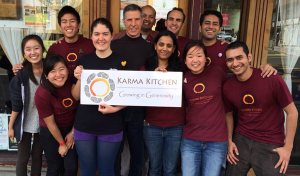
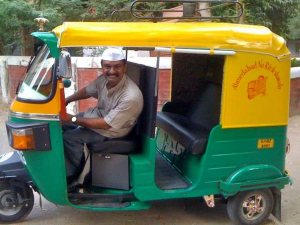 I want to end with this story of one of my friends,
I want to end with this story of one of my friends, 



